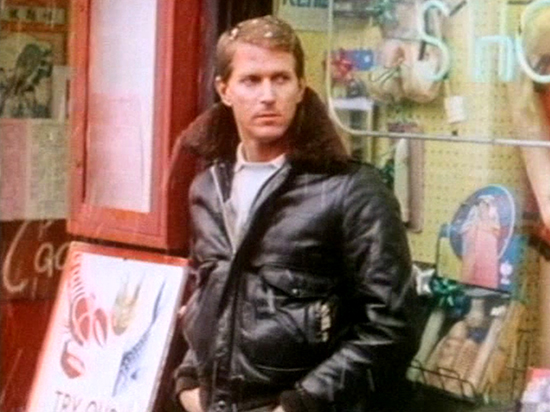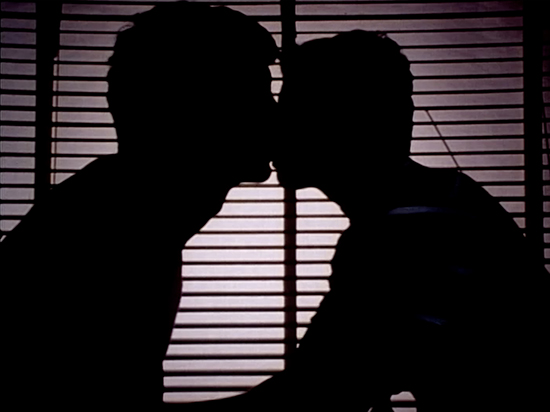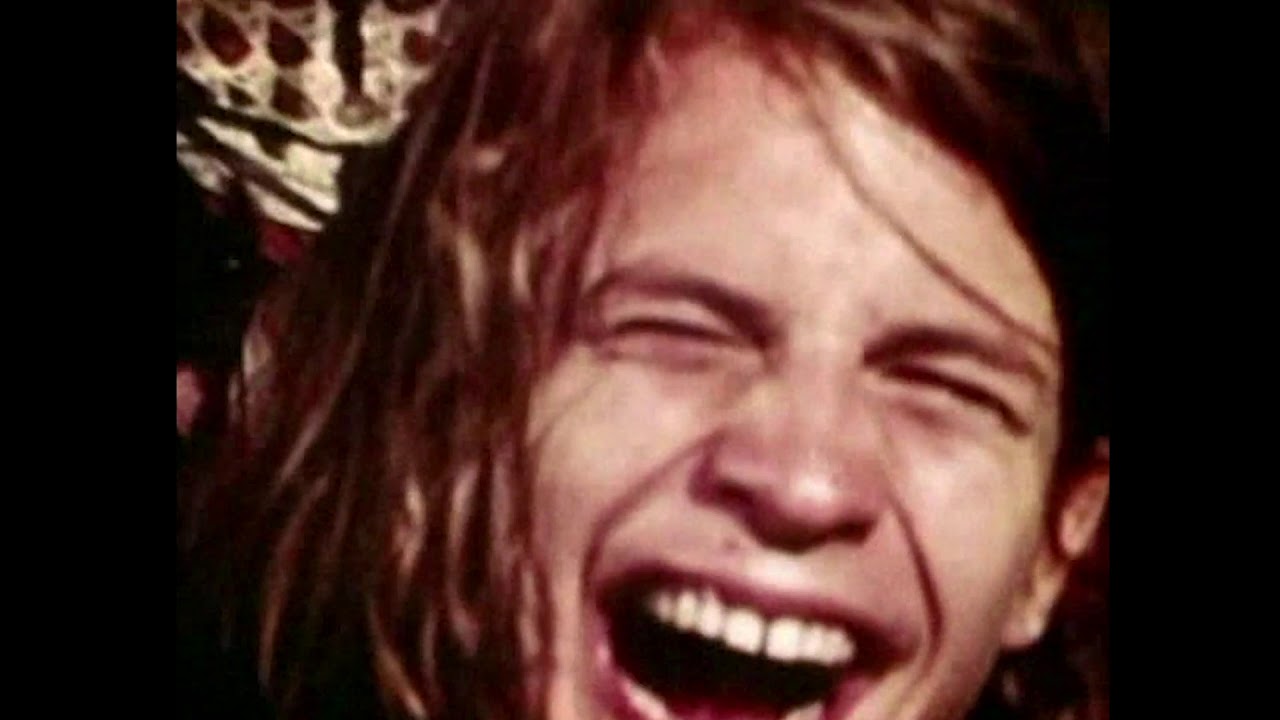Gay desire in art, both high and low, has always been tied to the debate of obscenity in America. Homosexual sex and sexuality has consistently caused a stir for decades, whether implicit in Kenneth Anger’s post-World War II avant-garde classic Fireworks to Tom of Finland’s explicit, fetishistic drawings of gay hyper-masculinty, to Marlon Riggs’ seminal black queer film Tongues Untied causing a firestorm with American conservative Christian groups due to Riggs’ film receiving a public grant from the National Endowment for the Arts. Many queer works have been labeled ‘pornographic’ even at the mere suggestion of same-sex sexual relations. The label can be poisonous, and often rears its ugly head in matters of the ratings system for commercial films. And so, often that is why the prototypical gay character on-screen is usually rendered as a sexless token.
The HIV/AIDS crisis only added fuel to the fire of on-screen homosexuality, amid low information that this was a disease that could only be sexually transmitted among homosexuals, creating a spectre that sex among gay men was an immediate death sentence. One can imagine how over the years actual gay pornography has been looked down upon and relegated from discussions of queer film images, even if those works were made by gay men, starring gay men, and for gay men. So when a work as exhaustive, obsessive, and exhilarating as Evan Purchell’s golden age of gay porn collage film Ask Any Buddy comes along, its existence goes beyond just a fixation on desire and pleasure at its more profane. Ask Any Buddy serves as a loving but winking commentary on tropes of the genre, and a vital historical document of not just gay people on-screen at the time, but gay life in real-life America at the time as well.
The film first made waves as an Instagram page. The very NSFW and still active account comprises of uploaded video clips, published features and photographs from the gay press, promotional art and advertisements in theaters, and many other materials of gay porn films from the 1970s and 1980s. Most of the works featured come directly from Purchell himself, who has worked channels like eBay and has obtained contacts across America to find these possessions. The page earned attention from ArtForum magazine in 2018, and the Texas-based Purchell’s pursuits of this project, whether for Instagram or with this film, are coming from a mindset as an archivist. With that in mind, gay pornography can be particularly laborious – often, these films (when re-formatted from film reels into VHS tapes) were cut down for time or re-cut, and that is if these works were even put out on VHS at all. Purchell has managed to track down multiple cuts of gay adult films and digitize them. The cultural responsibility taken by Purchell cannot be overstated and Ask Any Buddy operates in a highly rhythmic kaleidoscopic collage, honoring this period of gay pornography films that is fun, erotic, shocking, and packs emotional punch as a tribute to a bygone era.
The structure of the film as a memory palace consists of scenes intercutting different movies, depicting similar situations lived by the same actors in similar locations and, yes, similar sexual positions building over the course of its run-time. Often, it veers into the abstract in the vein of Martin Arnold’s experimental short films, in the near-compulsive repetition of shots and mirroring situations. While generic gay porn websites can also contain uploaded supercuts and montages of whatever kink you can imagine, pleasure is not the only thing Ask Any Buddy is presenting. This film is also experimental, and a worthy companion works ranging from Lewis Klahr’s re-contextualized queer readings of pop art communication collage films like The Pettifogger, and Guy Maddin’s collaboration with Galen and Evan Johnson, The Green Fog, a film that repurposes a series of old films and television content shot in San Francisco to revisit the plot of the most famous San Francisco film, Alfred Hitchcock’s Vertigo.

Purchell’s film is not a narrative, but there are several cheeky and inspired digressions that show multiple works in conversation. At no point does the filmmaker express superiority towards these works – it is clear this is infectious passion in the connections and concoctions he presents. The considerable breadth of gay porn history on film and the locations, capturing San Francisco, Los Angeles, and New York gay hubs, shares similarities with Thom Andersen’s essay collage film about Los Angeles on film, Los Angeles Plays Itself (that title itself a wink and a nod to Fred Halsted’s gay porn classic, LA Plays Itself). But perhaps the work that should be most compared to Ask Any Buddy is the work of visual artist Christian Marclay, whose art installation The Clock was a dizzying 24-hour experiment, editing together visuals of a clock through film history and exploring and subverting conventions of the image and narrative tied to time. In that respect, Ask Any Buddy does for cock and balls what Marclay did for clocks.
Ask Any Buddy does more than present repetition, also revealing the idiosyncrasies of the many films featured. Some works had clearly more artistic intention than to merely be dismissed as porn – these films were also political. Made at the height of post-Stonewall gay liberation, pride parades figure in many of these ’70s gay pornography films, and are present in Purchell’s film – Harvey Milk even makes a cameo. When the “gay lifestyle” was coming under attack by conservative action groups who sought to dehumanize them and cast them are mentally ill perverts who needed to be “corrected” by society, gay pride was about showing pushback from those who were unapologetic about their sex lives. It was about showing what made them different, but also that what they were doing was a very natural thing. And so gay pornography, prior to being industrialized into something more commercial (be it your Sean Cody or Bel Ami networks that make millions of dollars annually as gay porn websites), was where artistic and political expressions were foregrounded. These moments presenting gay pride and gay power functioned in forms of art that celebrated sex as much as in protest marches, proving these collection of works, even in collaged form, are vital. Ask Any Buddy proves this in an invaluable presentation of gay history in film, and in culture more broadly.
Ask Any Buddy is a long-needed tribute, which also functions in its zeal a reconsideration of what gay pornography of this era represented. There is still an undoubted bittersweetness to proceedings, knowing many of these men in front of and behind the camera succumbed to AIDS. However, they are forever presented in these works in their beautiful, desirable forms. Ask Any Buddy reconciles an important fact about gay life and homosexuality on-screen, that gay liberation was always tied to gay sex. In a post-gay marriage world, often favouring the most vanilla form of assimilated heteronormativity, Ask Any Buddy shows the subversive transgressions of our gay ancestors, reminding many why we are what we are, and why we want what we want in the first place.
Ask Any Buddy is available to watch as part of BFI Flare at Home



